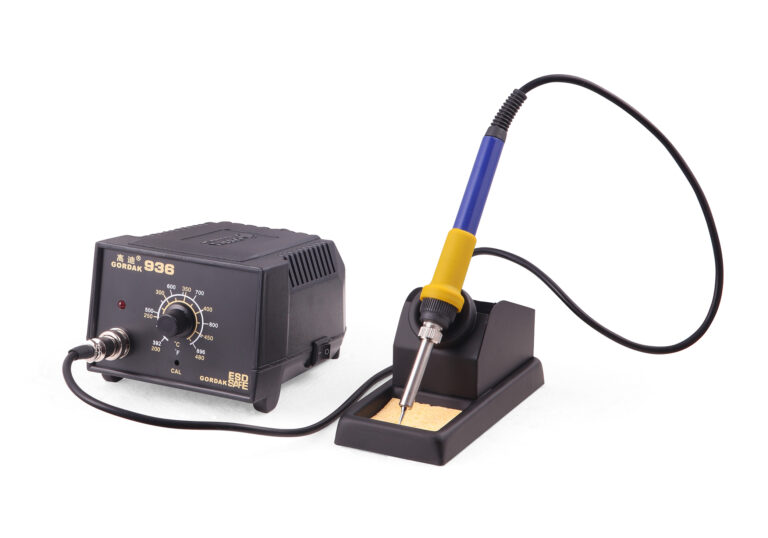Have you ever thought about investing in a soldering station for your projects or business? In many cases, determining how a soldering station works can help you understand these unique systems; in turn, this can allow you to choose the most appropriate solution for your needs. In accordance with this thought, today, we’re looking at how soldering stations work to help you decide whether these will be right for your needs.
How Do Soldering Stations Work?
If you have been looking to learn more about how soldering stations work, it’s first important to consider the main components of a soldering station. Soldering stations typically comprise a metal heating element, a soldering iron holder, a sponge for wetting and gentle cleaning, and a power regulator.
The heating element, typically in the form of a soldering iron, is designed to heat up to high temperatures, which helps melt the solder, thereby creating a strong connection between the individual parts as the solder solidifies on cooling. Solder generally has a relatively low melting point, making it a great option to join materials and components.
Many soldering stations also offer a range of additional attachments and components to help make the process easier. For example, some soldering stations may also provide a foam or rubber grip, a desoldering tool to remove unwanted solder, and various stands and clamps to hold the soldering iron when it’s not in use.
Simply put: soldering stations provide a wide range of specialist tools and equipment pieces that help ensure you have everything you might need to complete soldering successfully.

Before Using A Soldering Station
Before you begin using your soldering station, it’s first essential that you consider the different features of the device to help you make the most of it.
As part of this, making sure you first understand how your soldering station works is vital. Indeed, soldering stations can work in several different ways; for example, fixed-temperature soldering stations operate at a specified temperature, while variable-temperature stations can be adjusted to work within a range of temperatures. Considering this can help you choose a soldering station that is suited to your needs.
Of course, it’s also worth considering that power requirements may vary between soldering stations, so always check the power levels needed to reliably heat your soldering station before getting started. This can help ensure a more consistent soldering experience, improving the quality of your solder results accordingly. Most soldering stations operate at between 40-80 watts of power. The higher the wattage the, faster the heating element will heat.
Always Start Out With the Highest Quality Soldering Station
Thus far, we’ve looked at some of the key things you should know about how soldering stations work. However, before you get started, it’s hugely important to choose a top-quality device (and check the instructions for use thoroughly to equip you with the knowledge you’ll need to use the equipment safely). Luckily, this is where our experts here at Gordak can help, and so, we’ll be here to help you choose the ideal solder equipment for your needs, too. Please contact us at info@gordakelec.com.



